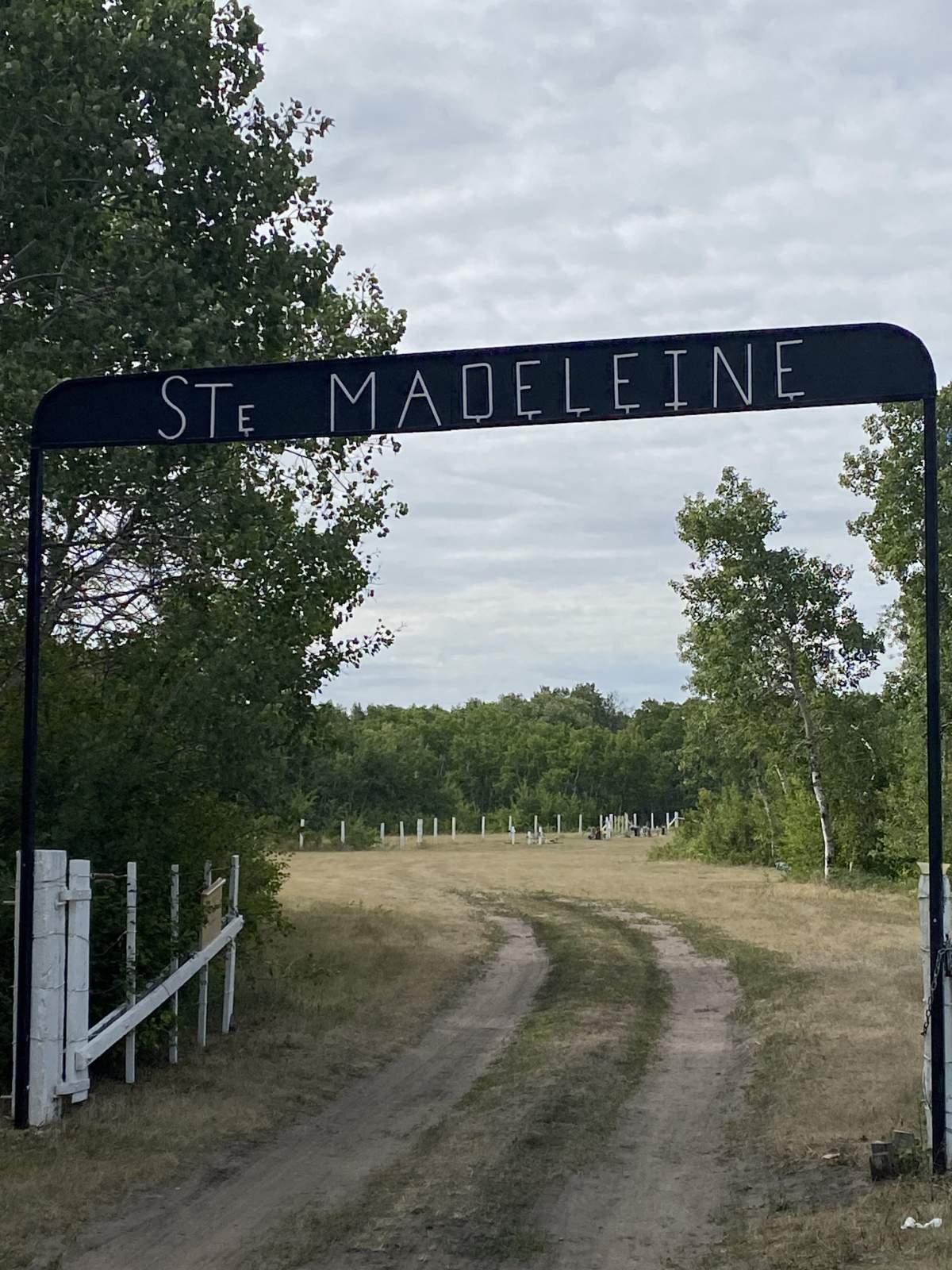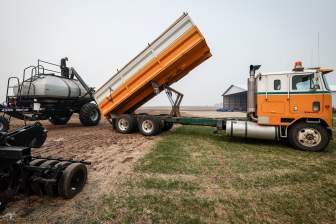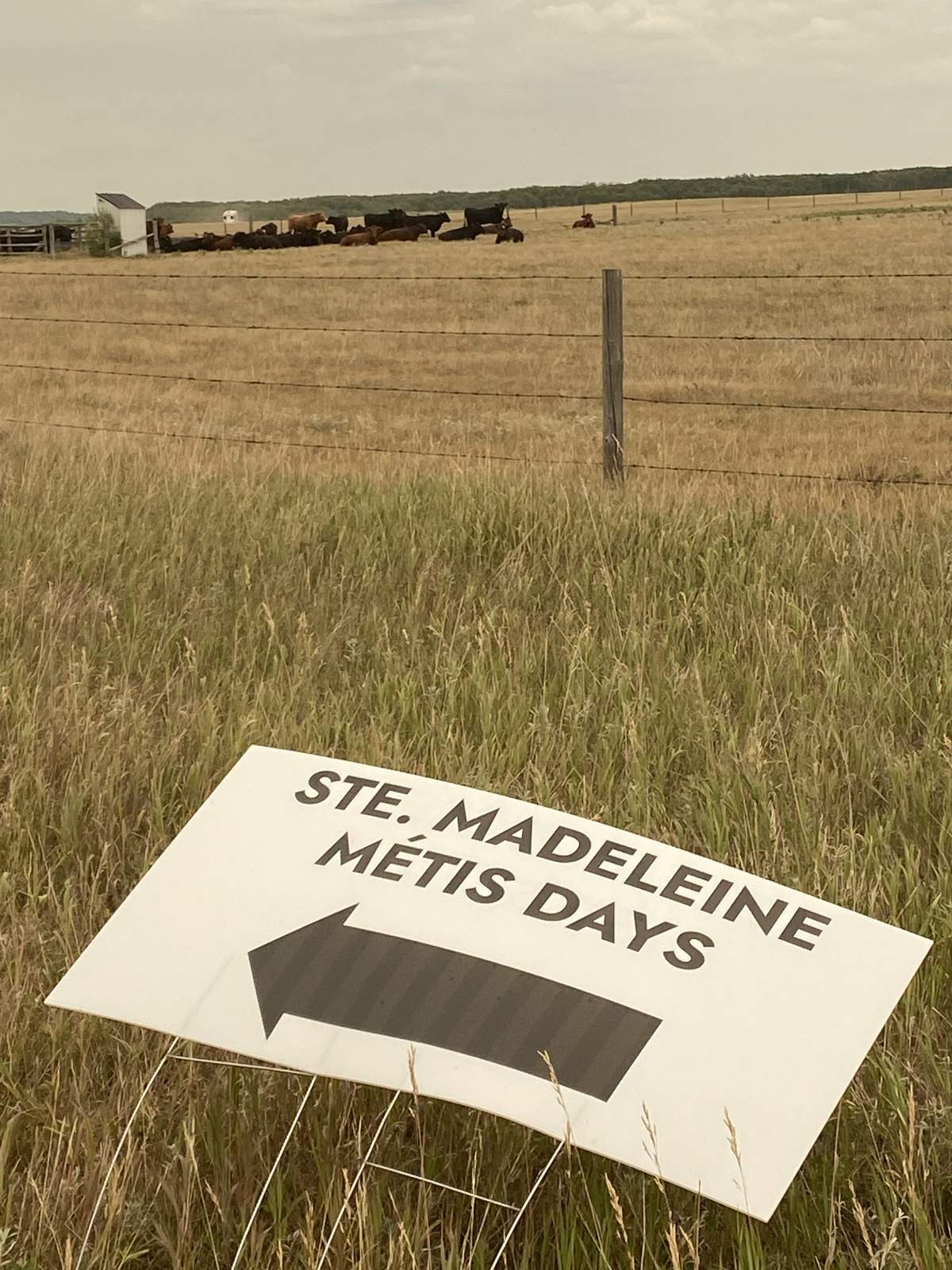STE. MADELEINE, Man. — In the third weekend of July every year since 1990, Red River Métis gather in a field 340 kilometres west of Winnipeg as cattle graze around them.

Thirty-five Métis families used to live in a village here. They had a church and a school and homes until the government burned it all to the ground in 1938 to make way for a community pasture where area farmers could leave their cattle to feed off the land.
“I don’t think many Manitobans or even Canadians know this story where cattle were more precious than human beings and the Métis people,” says Manitoba Métis Federation president David Chartrand.
All that remains now is the community’s cemetery, where village founders and many of their descendants are laid to rest.
Elder Verna DeMontigny’s family is here. She has her own plot set aside for when the time comes.
But she and others hope to live here someday — not just be buried here.
The federation is in talks with the Manitoba government to get the Crown land back from the cattle that displaced them.
“If it happens in my lifetime I want a house over there,” DeMontigny points across to an open field. “I’ve got my spot picked out. I wouldn’t mind coming back.”

Get daily National news
Her parents had settled in this area of rolling hills near Binscarth, Man., in the 1930s.
“Families used to move and follow each other, digging seneca roots in the summer,” she explains, and they’d often be gone for months working as labourers for area farmers.
Times were tough in the Dirty 30s and settlers needed a community pasture for their animals. The federal government decided that the spot where the village of Ste. Madeleine stood would be ideal. It would be destroyed while families were away working.
DeMontigny was told the story by her father.
“When they came back in the middle of October, their house was already burned down,” she says.
The family’s frantic dog was shot dead in front of them by government authorities, he told her.
The Métis were forced to scatter throughout southwestern Manitoba with only the clothes and belongings they had with them. The land was eventually given to the Manitoba government, which set up a pasture association to manage it.
In 1990, descendants decided to gather at the former village site for a weekend each July to share culture and to remember the history here.
They drive past grazing cattle and a “no trespassing” sign to get here.
Kim Smith of the Ste. Madeleine Métis local is an organizer and descendant. She breaks down when talking about the bitter-sweetness of the gathering — the excitement as the Friday approaches and the sadness of watching tents and campers leave on the Sunday, until the next year.
Like DeMontigny and others, she hopes they can stay here permanently one day.
“Oh God, I think about that all the time, actually,” Smith says. “I was coming here thinking maybe one day my grandchildren will be able to live here. There’s nothing wrong with this land.”
Chartrand has been working for years to make it happen. And in this time that governments are thinking about reconciliation now more than ever, he feels it’s close to happening.
“The thing that people better realize is Métis never give up and so from our perspective, we will get this land back. I’ve been speaking to the premier on this matter and we are in my view, very close,” he says.
“I’m hoping that some politician will finally have the vision and belief in themselves and want to do the right thing.”
Manitoba Premier Heather Stefanson’s office confirms talks are ongoing. But an election looms in October and the opposition NDP is favoured to topple the Progressive Conservative government. Many hoped an announcement would be made at Ste. Madeleine Métis Days this year, July 14-16. Yet another one passed without that news. Global News asked the NDP, led by Wab Kinew, who is Ojibway, if an NDP government would return the land if elected. The party didn’t respond.
A permanent exhibit memorializing what happened to this village was established at the Manitoba Museum in 2019 called Ni Kishkishin I Remember Ste. Madeleine.
“We want this story to be understood,” Chartrand says. “This wasn’t the 1800s this was the 1900s. … No one even raised a finger, nobody spoke out and said it’s wrong.”
Returning the land, he says, is the only way to right the historic wrong, and they continue to wait to see if it happens.














Comments